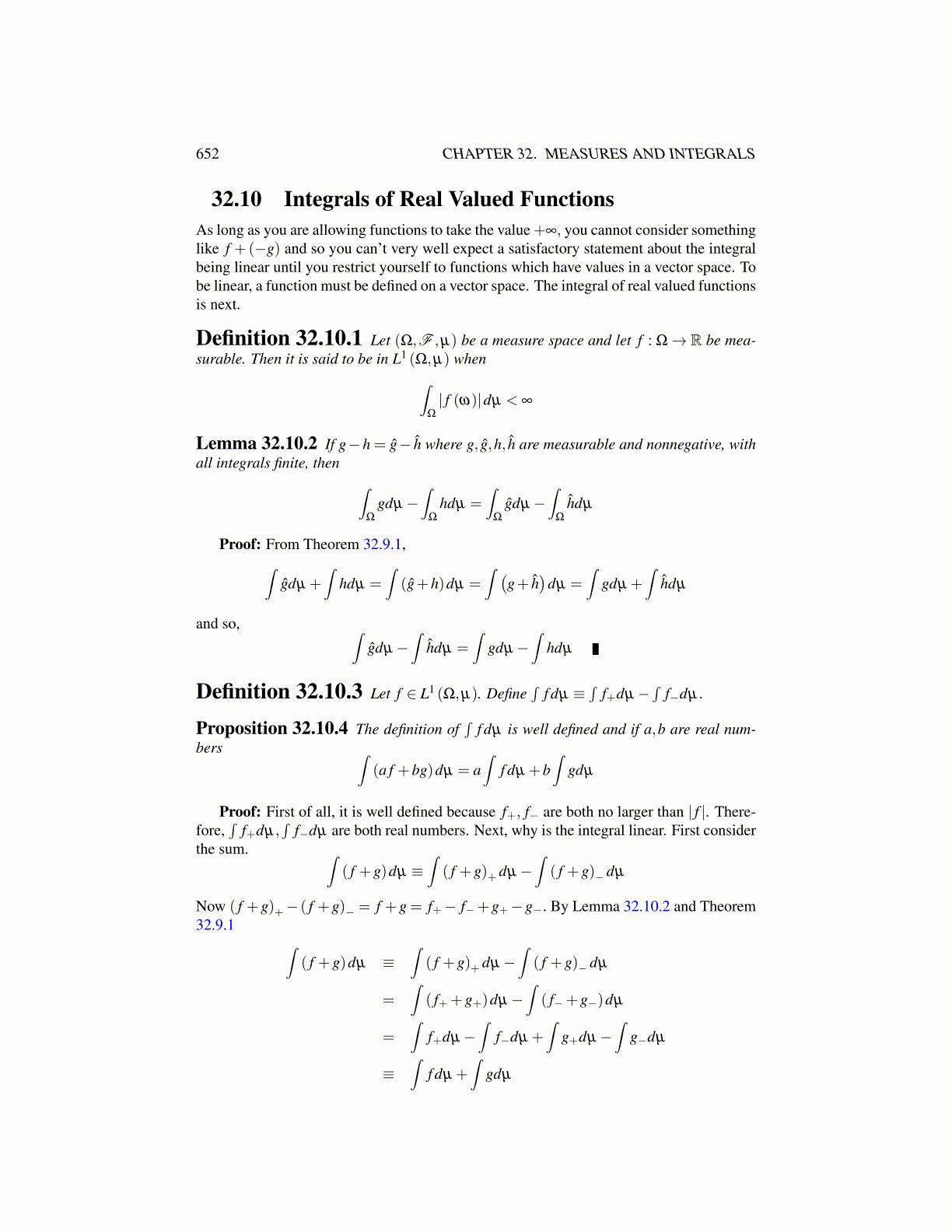
652 CHAPTER 32. MEASURES AND INTEGRALS
Example 32.11.4 Suppose you have (U,F ) and (V,S ) , two measurable spaces. LetK ⊆ U ×V consist of all sets of the form A×B where A ∈ F and B ∈ S . This is easilyseen to be a π system. When this is done, σ (K ) is denoted as F ×S .
Definition 32.11.5 When K is the open sets of Rp, the Borel sets, denoted asB (Rp) , are defined as B (Rp)≡ σ (K ).
Don’t try to describe a typical Borel set. Just use the definition that these are those setsin the smallest σ algebra that contains the open sets. However, if you wanted to give this atry, see Hewitt and Stromberg [20] who do something like this in showing the existence ofLebesgue measurable sets which are not Borel measurable.
For example, here is a useful result about the product of Borel sets.
Lemma 32.11.6 If Ak is a Borel set in R, then ∏pi=1 Ak is a Borel set in Rp.
Proof: Let πk : Rp → R be defined by πk (x)≡ xk, the kth entry of x. Then
π−1k (U) = R×·· ·×R×U ×R×·· ·×R
Let G be those Borel sets B such that π−1k (B) is Borel in Rp. Then from the above, this
is true if B is open. However, it follows from the definition of inverse image that G is a σ
algebra. Therefore, by definition G = B (Rp). Now note that
p
∏i=1
Ak = ∩pk=1π
−1k (Ak) ∈ B (Rp) .
32.12 Product MeasuresFirst of all is a definition.
Definition 32.12.1 Let (X ,F ,µ) be a measure space. Then it is called σ finite ifthere exists an increasing sequence of sets Rn ∈ F such that µ (Rn)< ∞ for all n and alsoX = ∪∞
n=1Rn.
Now I will show how to define a measure on ∏pi=1 Xi given that (Xi,Fi,µ i) is a σ finite
measure space. The main example I have in mind is the case where each Xi = R and ameasure µ = m to be described a little later, yielding p dimensional Lebesgue measure.However, there is no good reason not to do this in general. It is no harder, so this is what Iam doing here.
Let K denote all subsets of X ≡ ∏pi=1 Xi which are the form ∏
pi=1 Ei where Ei ∈ Fi.
These are called measurable rectangles. Let {Rni }
∞
n=1 be the sequence of sets in Fi whoseunion is all of Xi, Rn
i ⊆ Rn+1i , and µ i (R
ni ) < ∞. Thus if Rn ≡ ∏
pi=1 Rn
i , and E ≡ ∏pi=1 Ei,
then
Rn ∩E =p
∏i=1
Rni ∩Ei
Let I ≡ (i1, · · · , ip) where (i1, · · · , ip) is a permutation of {1, · · · , p}. Also, to save on space,let F be a subset of ∏
pi=1 Xi ≡X and denote the iterated integral∫
X11
· · ·∫
Xip
XF (x1, · · · ,xp)dµ i1 · · ·dµ ip